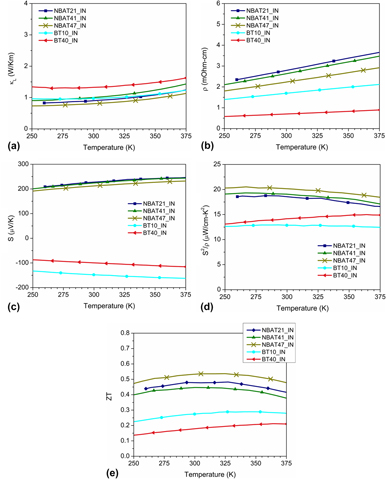Article contents
Influence of porosity on the transport properties of Bi2Te3-based alloys by field-assisted sintering
Published online by Cambridge University Press: 16 May 2013
Abstract

Retention of a nanostructure in thermoelectric materials through rapid sintering (e.g., field-assisted sintering) is generally associated with leaving certain amounts of porosity due to short sintering times. In this study, the influence of porosity on the thermoelectric transport properties in Bi2Te3-based alloys was studied by changing the sintering pressure during spark plasma sintering. N-type Bi2Te3 and p-type (Bi0.2Sb0.8)2Te3 were sintered at 673 K using pressures from 50 to 300 MPa to obtain different levels of porosity. Electrical resistivity, thermal conductivity, Seebeck coefficient, carrier concentrations, and Hall mobility were measured and characterized. The results show that increasing sintering pressure is effective in reducing porosity, which lowers electrical resistivity and increases the carrier concentrations. The transport properties were fitted to general effective medium equations and demonstrate that in p-type (Bi0.2Sb0.8)2Te3 sintered at high pressures, decreases in electrical resistivity and lattice thermal conductivity exceeded the Seebeck coefficient reduction, improving the thermoelectric figure of merit.
Keywords
- Type
- Articles
- Information
- Journal of Materials Research , Volume 28 , Issue 13: FOCUS ISSUE: Frontiers in Thin-Film Epitaxy and Nanostructured Materials , 14 July 2013 , pp. 1853 - 1861
- Copyright
- Copyright © Materials Research Society 2013
References
REFERENCES
- 11
- Cited by


